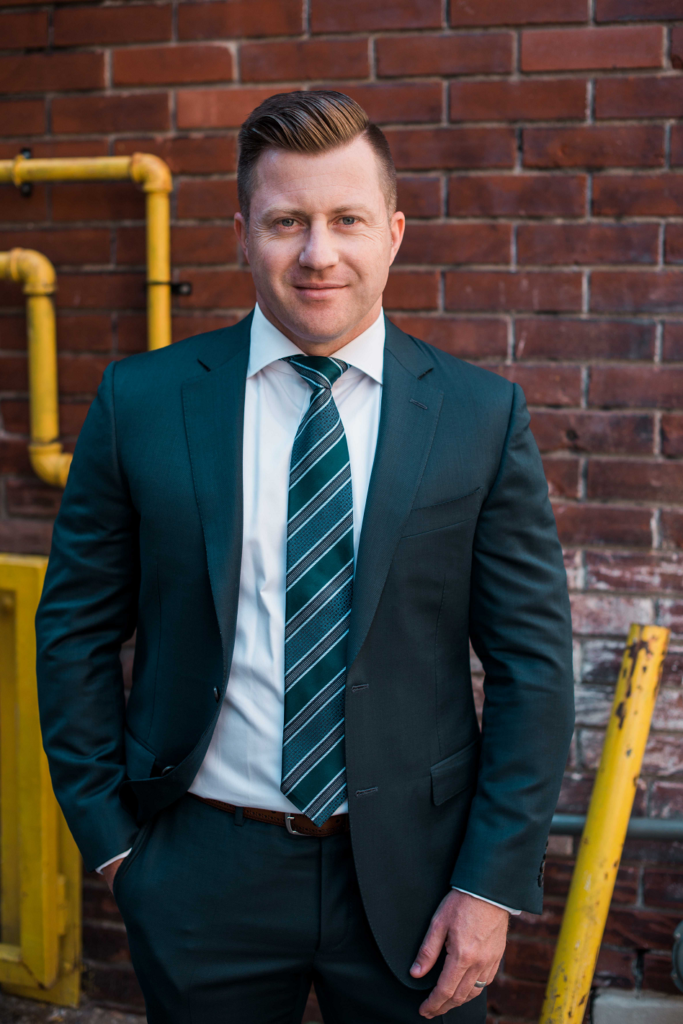This article was commissioned by Lowestrates.ca as part of their Financially Naked series; a series of articles meant to eliminate the stigma around talking about our money mistakes by giving people the space to bare all about their most vulnerable financial experiences, mistakes, and regrets. You can view the original article as published on Lowestrates.ca here.
Illustration by Jeannie Phan.
It’s a spring afternoon in Toronto in 2004, and I’m at a work lunch with my colleagues. After clearing our plates of sushi, the waiter leaves to get our bill. My mind starts racing. Which excuse will I use today? Make a run for the bathroom? Pull the old “I’m late for a meeting, can I settle up with you later?” or the “Would you mind expensing this one? I just submitted my expenses”? Then I have to think for a second. Which of these excuses have I already used with these lunch guests? Should I make up a new one just to be safe?
During my 20s, this was the script that would run through my head any time I was expected to cover a business expense with my personal credit card and get reimbursed later. Because the truth is: I didn’t have a credit card. On the day of that lunch, I was a 26-year-old mutual funds analyst with an MBA and an almost-completed Chartered Financial Analyst (CFA) designation under my belt.
And I was bankrupt.
If you know me, you might have a hard time believing this. Over the past two decades, I worked as an investment analyst at a global financial services firm, and have been dispensing financial advice as a regular commentator in Canadian media, such as The Globe and Mail, BNN, Financial Post, and CBC. I’m also the founder of Kind Wealth, a financial planning business that helps the under-50 crowd take control of their money and plan for their futures.
For a long time, I felt like a fraud. I had the MBA from the Rotman School of Business (known for its great finance program) and I eventually got my CFA designation (the gold standard for investment professionals). Yet here I was walking around with an “R9” on my credit report from the time I was 25 until I turned 33. I spent years trying to understand the stock markets and what investment strategies would yield the best results. But the best investment lesson I would ever receive was my bankruptcy. I’m a far better financial professional today because of it.
To understand how I went bankrupt, we need to rewind several years, to 1996. I was 18 then, working as a part-time teller at my local bank. I had no idea how the stock markets worked or how to run an investment portfolio. But between industry courses that the bank sponsored and late-night talks over coffee with a close friend who was actively investing in the markets, my interest and knowledge in investing grew quickly.
1996 marked the middle of a decade of economic prosperity. The internet became publicly available in 1991, and by the mid-to-late ’90s, tech giants like Amazon, Google, and Yahoo were born. Finding work was easy. Banks were fast and loose with credit. And the markets seemed to relentlessly tick upwards. Companies with zero profit and no clear business model were doubling and tripling in value overnight — as long as they had anything to do with the internet.
By the late 1990s, I controlled a nearly half-a-million-dollar investment portfolio with over $200,000 of borrowed money
Coming into adulthood in this environment gave me a distorted perception of reality. As I made my first investments at the age of 18, I enjoyed early success, which encouraged me to search for ways to get my hands on more money to invest. By 1998, I was investing all of my savings in mutual funds within an RRSP, and had begun dipping my toe in penny stocks; small technology startups that were leveraging this strange new internet thing. In less than a year, I’d grown my portfolio to $10,000. I was hooked. Investing began to consume all of my time and attention. I followed the markets every day and read everything I could get my hands on. The trouble was, I was still only playing with chump change. I didn’t have the capital to execute some of the investment strategies I’d learned about. That was about to change.
The bank I worked for was running a promotion that offered a line of credit to any small business owner with a clean credit history. The process was entirely automatic. There was no check in place to prevent a 19-year-old with a business account from receiving the offer, and no rule excluding employees from being eligible. So, I went downtown to the Ministry of Government and Consumer Services, registered a business (“KO Investments”), and opened a business banking account. Four months later, I received the offer for my first $15,000 unsecured line of credit. I realized I could rinse and repeat this process, and secured an additional five lines of credit — and invested almost all of them. By the late 1990s, I controlled a nearly half-a-million-dollar investment portfolio with over $200,000 of borrowed money.
That was dangerous for two reasons. One, I was trading “on margin,” meaning I was borrowing money to buy stock. And because my initial funds came from a line of credit, I was actually borrowing money on top of borrowed money. Two, I was trading derivatives — complex and highly volatile investments that don’t represent ownership over an asset, such as a company, but a contractual obligation (futures) or an option (options) to buy or sell something at a future date/time for a predetermined price. Derivatives magnify your gains and your losses. They also lose value with each passing day and eventually expire worthless unless your bet pans out before then.
By early 2000, I was investing in a wide variety of stocks and options. Nearly all of my assets were appreciating rapidly, and I felt like a genius. But by March of that year, the first cracks in the market appeared — cracks that would eventually lead to a total collapse, especially for technology companies. This didn’t happen overnight, of course. It was a series of advances and (mainly) retreats that spanned nearly three years.
It was the kind of day where I’d call up my friends to go play football. Instead, I was telling my parents that their 25-year-old son planned to file for bankruptcy on $189,518.02
Those were the most stressful three years of my life. I’d moved up the ranks at the bank, from teller to financial advisor. But no matter where I was, I was on red alert, following the ups and downs of the market all day, every day, even while in the middle of helping clients. I was desperate to see an uptick in my investments, hoping I could avoid financial ruin.
In late 2002, when all was said and done, the Nasdaq index had fallen from 5,000 points to just over 1,000 points. I lost nearly everything. After several attempts to access more credit and even borrow money from a friend — a friend who had the good sense to say no — I realized I had no way out. I could continue shuffling credit around for a little while, using one line of credit to make the minimum payment on another, but it was only a matter of time before I would be bust.
On a beautiful spring Sunday in May 2003, I sat my parents down after breakfast and said I had something important to share. The sun was pouring in through our kitchen’s big bay windows. It was the kind of day where I’d call up my friends to go play football. Instead, I was telling my parents that their 25-year-old son planned to file for bankruptcy on $189,518.02.
To my surprise, they were more stunned that I’d had access to so much credit than they were disappointed in the way I’d used it. Both of them agreed that bankruptcy was the best option, and that the bank was also to blame for extending so much credit to someone so young. I finally felt a true sense of relief from the stress and anxiety I’d been carrying. But the shame and embarrassment stuck with me for much longer.
When you claim bankruptcy, it’s nearly impossible to secure any form of credit for several years. It took me four years to get another credit card: a Visa with a $500 limit, and only because I sent them $500 as collateral against it.
Toward the end of my bankruptcy, in 2009, I was headhunted for a job at the investment arm of the bank where I’d worked as a young teller — the same bank whose debt I’d defaulted on. They were in the process of making me an offer when they discovered my bankruptcy. The hiring manager called me and said his HR team had caught a red flag during their due diligence. They couldn’t disclose the issue to him, but he wanted to see if I knew anything about it. He was blindsided and I was utterly embarrassed. I came clean about what happened, but they still rescinded the offer. It was the first time I’d told anyone about my bankruptcy since my parents, and all of the emotions came rushing back.
There have been ebbs and flows over the years but with time, the feelings of shame and embarrassment have vanished. All that remains now is an overwhelming sense of gratitude. As a kid, losing control of my money and my financial future felt sickening. But it’s why I’m so passionate about what I do today. It’s hard to communicate how rewarding it is to now help others let go of their financial stress, shame, or embarrassment, and take control of their money so they, too, can live life on their own terms.
About the Author

David O’Leary is Founder & Principal of Kind Wealth and host of The Impact Investing Podcast. He is the former Managing Director of Origin Capital; a provider of high-impact investments that provide an opportunity for the world’s most vulnerable people in the hardest to reach places. Read Dave’s bio or connect with him on LinkedIn.




